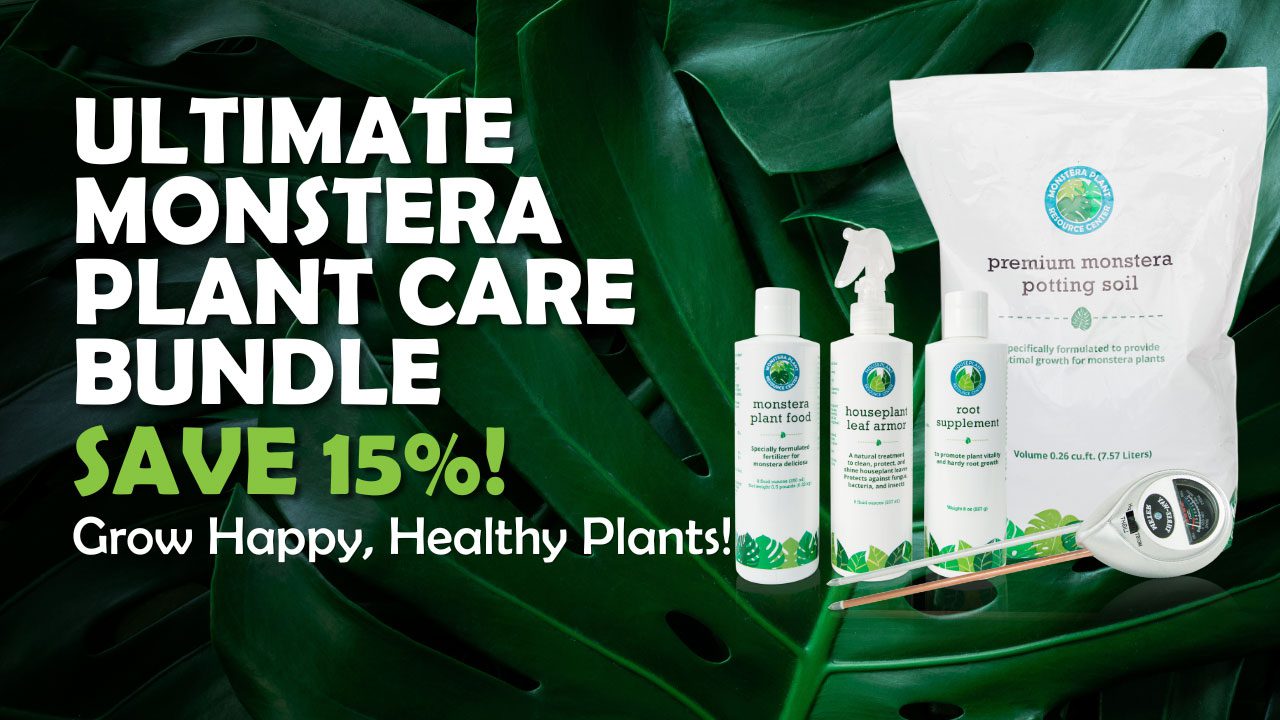You’ve probably seen beautiful pictures on Instagram and Pinterest of monstera plants or cuttings growing in a vase of clear water. You might wonder: was the plant just in that vase for a pretty picture, or can you actually grow a monstera without soil? Can you really grow monstera plants with hydroponics?
The answer is: you totally can!
Most monstera plants do well with hydroponics or in semi-hydroponic mediums such as LECA balls (don’t worry, we’ll explain these terms), and they can be a great option if you tend to overwater or if you just like the look of a beautiful plant growing in a clear glass container of water.
First of all, what are hydroponics and semi-hydroponics?
Hydroponics simply describes any method of growing plants without soil, but more often this refers to growing plants only in water. On a commercial scale, this involves keeping the water moving with pumps, but for your indoor plants, you just need to change the water to keep it fresh.
Semi-hydroponics describes a method of growing plants in an inorganic medium (as opposed to soil, bark, or peat) such as clay LECA balls.
You’ve probably seen or performed plant propagation before where you take a cutting of a plant and stick it in water until it grows roots. Well, guess what? That’s hydroponics!
So why hydroponics or semi-hydroponics? Here are some advantages to this growing method.
Advantages of Hydroponics and Semi-Hydroponics for Monstera Plants:
Less vulnerability to insects. Pests prefer dark, damp conditions you’ll often find when you grow your monstera in soil. They don’t last long in water, clay, sand, or other hydroponic growth mediums.
Prevents overwatering and infections. In hydroponics, the roots can absorb all the water they want without rotting because there is no fungus or bacteria present in a sterile medium like water. It’s the best of both worlds! Water hydroponics also prevent underwatering because, well, the plant lives in water. Easy peasy!
Your monstera may grow faster and larger. Plants can absorb nutrients faster in water than in soil, which allows them to grow larger, healthier root systems because the roots aren’t constricted by dense soil. This means you’ll get a big, beautiful, healthy plant in record time!
So how do you get started?
How to Grow Monstera Plants with Hydroponics:
Step 1: Choose your container
Find a clear glass or ceramic container that allows your plant to stand upright. (Container with narrow necks like vases or bottles work well). Make sure to avoid metal containers because they can leach heavy metals into your water. Not good!
Step 2: Place your plant in the container
You can propagate your monstera and place the cutting in a container of water. Roots should start to form within a few weeks for most plants. Instead of planting the cutting in soil, simply leave it in the water!
You can also convert the whole plant over to hydroponics. To do this, carefully remove your monstera from its pot and remove as much of the soil from the roots as possible. If this gets difficult, run the roots under lukewarm tap water to remove all the soil.
(If you can’t get it all off, don’t worry. Just remove your plant from the container every few days to rinse the roots and change the water. The roots should be completely clean after 2 or 3 rinses.)
Then, transfer your monstera to a container of well water, spring water, or rainwater. Do NOT use chlorinated tap water or filtered water. The chemicals and salts used in water filtration can kill your plant! If all you can get is tap water, leave it sitting out at least overnight so the chlorine can dissipate.
Make sure your monstera can stand upright. If it can’t stand up in your container, add clean pebbles or marbles to support the stems.
Note: Don’t forget to protect your furniture! Try sticking felt feet to the bottom of your container or placing it on a decorative saucer or mat. You can also find containers with feet or a pedestal!
Step 3: Add more water and fertilizer.
Add more bottled or distilled water to keep the container full. Once a month or so, add a few drops of liquid fertilizer. Our Monstera Plant Food is designed with this in mind!
Hydroponics and semi-hydroponics are great options for growing monsteras, especially for chronic overwaters. And these methods look cool too!





